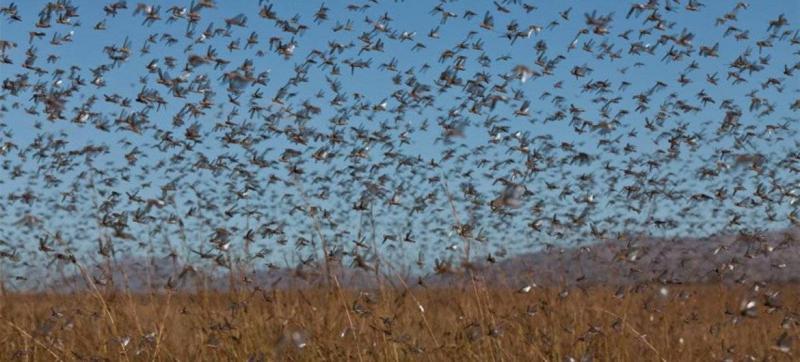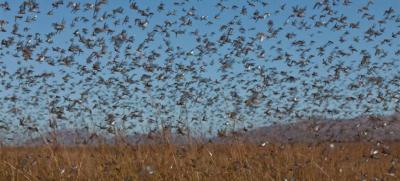Egyptian authorities continue to combat swarms of locusts reaching the southern borders from Sudan. Teams in the southern Red Sea region are actively engaged after the areas in the southern Red Sea governorate of Egypt experienced significant incursions of yellow desert locust swarms. These swarms have crossed the Sudanese border into Egypt. According to Egyptian sources for "Al Arabiya," the number of swarms increased sharply after the initial swarms were eradicated, and they are now on the outskirts of Marsa Alam, specifically in the Hamata and Wadi El Gamal areas south of the city, having entered from both land and sea.
In the past two weeks, the control teams successfully eliminated large swarms of yellow desert locusts from the control bases in Halaib, Shalateen, and Abu Ramad, with assistance from teams from Qena and Aswan governorates. However, the number of locust swarms has risen this year due to the lack of control measures in Sudan caused by ongoing events there, resulting in a larger influx than in previous years.
Sudan is one of the countries where locust swarms proliferate, and due to a lack of control by the responsible authorities, they spread significantly, nearing neighboring borders, particularly that of Egypt. Ahmed Rizk, head of the Plant Protection Administration in Egypt, revealed in a television interview that locusts breed in Yemen, Sudan, and Eritrea, and due to the wars and outbreaks occurring in Sudan, locust swarms are spreading even more.
He explained that locust swarms infiltrated the Egyptian border from Sudan in large quantities, spanning tens of kilometers, distributed across various areas, starting from Abu Ramad and currently reaching Shalateen. He noted that large numbers of locusts have significantly attacked trees and some mountainous crops.
For his part, Abdeen Said, head of the Halaib city in the Red Sea, confirmed the arrival of a representative from the Food and Agriculture Organization (FAO) to assess the situation and provide support. Said clarified that control teams have managed to reach up to 50 kilometers into the mountains from the coastal road and are effectively surrounding and combating the mobile swarms.
He emphasized that there are joint efforts among various entities to face this challenge, with coordination between local authorities, the Ministry of Agriculture, and relevant international institutions to tackle these swarms and mitigate their negative impact on farmers and the local community. Currently, efforts continue to combat these swarms using all available means, with committees formed to monitor developments and ensure effective responses to this changing natural phenomenon.




